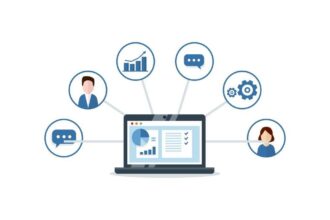Dave Rich has an interesting theory explaining the rapidly growing interest and investment in big data and specifically, in predictive analytics, over the last few years. “When the 2008 recession hit,” he told me recently, “the question was how come we weren’t better prepared with all the money we’ve spent in the last decade on information systems? That has caused a spur of activity that we’ve seen in the last several years, driven by the promise that now it’s technologically possible to have predictive analytics meets performance management at scale in real-time.”
Dave Rich has an interesting theory explaining the rapidly growing interest and investment in big data and specifically, in predictive analytics, over the last few years. “When the 2008 recession hit,” he told me recently, “the question was how come we weren’t better prepared with all the money we’ve spent in the last decade on information systems? That has caused a spur of activity that we’ve seen in the last several years, driven by the promise that now it’s technologically possible to have predictive analytics meets performance management at scale in real-time.”
 By “performance management” Rich means a management discipline, what it takes to manage the enterprise. And he thinks that we are witnessing now the emergence of a new management discipline, one being “much more about data-driven decision making.” He explains: “Management wants more data before making a decision or they want to collaborate with more people before making a decision, then the previous generation.”
By “performance management” Rich means a management discipline, what it takes to manage the enterprise. And he thinks that we are witnessing now the emergence of a new management discipline, one being “much more about data-driven decision making.” He explains: “Management wants more data before making a decision or they want to collaborate with more people before making a decision, then the previous generation.”
This shift in how enterprises are managed represents a big opportunity for companies providing the tools facilitating the new style of decision-making, an opportunity Rich couldn’t turn down when it came knocking. After 28 years with Accenture he was going to retire last year on January 31st. But on February 1st, he started a new job as CEO of Revolution Analytics, the company supporting, spreading, and enhancing R, the open-source statistics and predictive analytics programming language.

What’s new about big data and differentiates it from previous waves of investment in new tools for collecting and analyzing data, according to Rich, is “the ability to view at speed a much bigger variety of data sources.” A case in point is [x+1], a company using Revolution R Enterprise as a component of their digital marketing optimization platform which synchronizes marketers’ messages to consumers across a broad range of channels.
[x+1] continuously builds analytical models to allow its clients to automatically create a personalized experience for each site visitor, increase conversion rates and optimize marketing spend. It turns out that marketing optimization is today no different than financial trading, where big data analytics must be done fast to seize new opportunities in just a few seconds. And just like financial trading, marketing optimization involves terabytes of data. [x+1] collects the data from internal sources (e.g. CRM systems, call center transcripts and company website activity) as well as third-party sources such as socio-demographic segmentation, interest/affinity information, behavioral data, search engines, etc. The combination of volume and speed allows [x+1]’s customers to generate unique website experiences and user interactions in real-time. They are constantly updating their online media bids across scores of properties based on ever-changing price and availability data.
In this new business landscape where many activities take on the characteristics long associated only with financial trading, Revolution Analytics supplies tools for statistical analysis, a critical component of big data sometimes neglected by observers of the big data landscape. Unlike early pioneers SAS and SPSS (now owned by IBM), Revolution Analytics fits the mold of other key new players in the big data world: it supports and sells the commercial version of an open-source product, built and nurtured over many years by a dedicated community of enthusiasts. “SAS and SPSS remind me of Cobol and Fortran circa 1995,” says Rich. “The scientific and academic institutions are relying on R and over time, this will be like the switch from Cobol to Java. The kids today are learning R and it will have the run for the next forty years that SAS and SPSS had for the last forty.”
The growing acceptance of open-source software, especially when it is supported by a dedicated vendor, is another way by which the big data wave is different from previous surges of investment in the collection and analysis of data. The “trick of open source,” says Rich, “is that the community has got to like you as a distributor. And this community is slightly different than others in the sense that it consists of lots of academics and scientists and they are picky about who they want.” Keeping the R community happy with Revolution Analytics could serve as a barrier to entry for other companies that may try to replicate what it is doing. The open source community also provides continuous quality control and is a great source of continuous innovation. The big data market, I believe, could signal a larger shift in the enterprise software market, from proprietary solutions to a “freemium” business model, where software vendors charge for support, enhancements, and training around a specific “crowdsourced” software.
What’s the biggest challenge standing in the way of big data adoption? According to Rich it’s “figuring out how to migrate the people, not just the technology.” Which led me to ask where in the organization is big data being adopted and predictions that the CMO will be taking over the IT department. Again, Rich’s experience provides an interesting perspective: “Twenty years ago there was no such thing as a CIO. There was an MIS director reporting to the CFO. The CIO came into existence with ERP and business process re-engineering.” Now, CIOs have a similar opportunity to lead “and over the next 20 years the CIO is going to turn into the Chief Insights Officer.”
Rich believes that CIOs and CMOs must form a partnership to demonstrate the value of big data analytics. But the CIO should also form a partnership with other executives: “It will all come back to the CIO because the CIO is the only multi-disciplinary role other than the COO. But that’s going to be hard. There was a natural affinity between the CIO and the CFO back in the day going through ERP and client/server and data warehousing. From a personality type perspective, the CFO and CIO are two peas in a pod. The CMO and CIO usually hate each other. That’s going to be the challenge. Can the CIO and CMO work as partners to lead this change? Any talk that the CMO is going to swallow the CIO is not going to help. It’s dangerous.”
image: analytics/shutterstock








